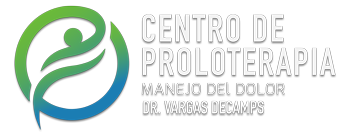With permission from Ross Hauser, MD Medical and Caring
Recent studies suggest that the ligaments can be the key to degenerative disc disease and low back pain.
It should be obvious that equally stable result in stable ligaments columns similarly unstable ligaments that produce unstable columns. This has been the motto of the Prolotherapists for over 60 years!
When the disc has a normal height, the ligaments that support the spine remain in normal length. As the disc height decreases in degenerative disc disease, vertebrae slips and are closer together. As a result, like a rubber band that loses tension, the ligaments of the spine is loosened and these loose or lax ligaments do not hold the vertebrae in place and while you are moving more, the result is chronic pain.
If not corrected, a vicious cycle is perpetuated and spinal instability and degeneration will be inevitable. The cycle begins with ligament injury, leading to increased stress on the disk, which in turn causes thinning of the disc. This puts more pressure on other discs and increases the degenerative disc disease, instability in the lumbar vertebrae is increased and increases the tension exerted on the disc. More cracks develop in the outer edge of the disc, degenerative disc disease worsens, and the process keeps repeating. The worse it is degenerative disc disease, instability worse, and vice versa.
Stem cell therapy is feasible and effective in stopping or reversing degenerative disc disease.
Last year, the Mayo Clinic published the results of animal studies suggest that stem cell therapy was feasible and effective way to stop or reverse the degenerative disc disease of the spine. In fact, they called the “baseline study.” In Medicine, the true result of the study, in many cases, is the result of the patient.
Degenerative Disc Disease (DDD).
This is a common form of osteoarthritis in the back. A degenerated disc is one that has lost water inside (dehydrated) and as a result the disc loses height and flattens.
This is what recent researchers concluded:
“Stem cell therapy it works to improve back pain in many, many people. Notably, in a February 2015 document, the doctors asked if therapy
The ligaments role in back pain
Two Recent research suggests that stem cell injections provide effective for degenerative disc disease because this treatment response reconstructs the ligaments, alleviate pain and demonstrate safety and efficacy.
Similarly, doctors warn that the treatment has to be done correctly.
The doctors wanted to know if medical research supports the idea that stem cells could regenerate injections damaged discs. all printed research explored and synovial fluid showed that stem cells derived from bone marrow, fat cells, or showed a successful inhibition of disc degeneration.
Mothers derived from bone marrow cells demonstrated superior quality in the repair compared to other stem cell treatments.
This research continues to support recent findings that stem cell therapy is an effective treatment for back pain in the hands of qualified and properly trained physicians. At the 2013 annual meeting of the American Academy of Pain Medicine in Fort Lauderdale, pain specialists Columbia Interventional Pain Center in St. Louis, studied the cases of 24 patients who received autologous bone marrow injections for chronic back pain . The results were promising. Half of the patients did not need any further treatment after injections of bone marrow 10 of these 12 reported continued pain relief injections one year. All patients showed signs of disc degeneration before injections of bone marrow.
Disc degeneration is rarely the cause of pain
Most patients who come to the center with low back pain, chest pain or neck showing bring an MRI disc degeneration, but this is rarely the cause of your pain.

 English
English Español
Español